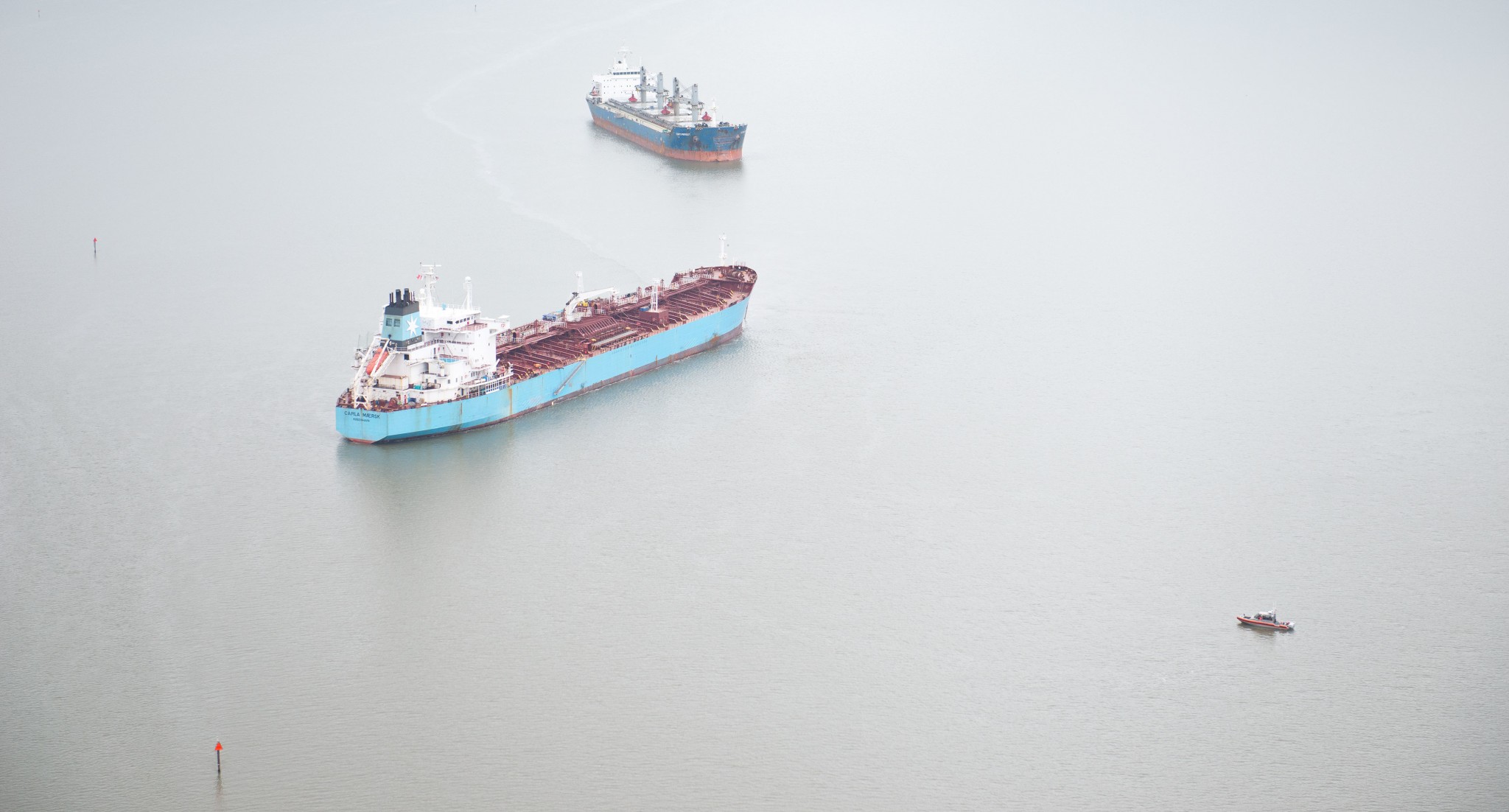A March 2015 collision in the Houston Ship Channel between the 600′ chemical tanker Carla Maersk and the 623′ bulk carrier Conti Peridot was caused by the inability of the pilot on the tanker to respond to hydrodynamic forces as the ships met in restricted visibility, and a lack of communication about difficulty controlling the vessel, according to findings by the National Transportation Safety Board (NTSB).
Contributing factors included “inadequate bridge resource management between the master and the pilot on the Conti Peridot,” according to a statement released after the board met Tuesday in Washington, D.C.
The March 9, 2015 accident spilled 88,200 gals. of methyl tert-butyl ether (MTBE) and shut the busy waterway for days. People in nearby communities were warned to take shelter, and the incident showed how effective bridge resource management “can make the difference between a near-miss and a tragic accident,” said NTSB chairman Christopher Hart.
The NTSB also identified “a lack of pre-determined ship movement strategies during restricted visibility in the Houston Ship Channel” as a third factor. The waterway into one of America’s busiest ports typically sees passage by more than 60 ships and 350 barges a day, the agency says.





